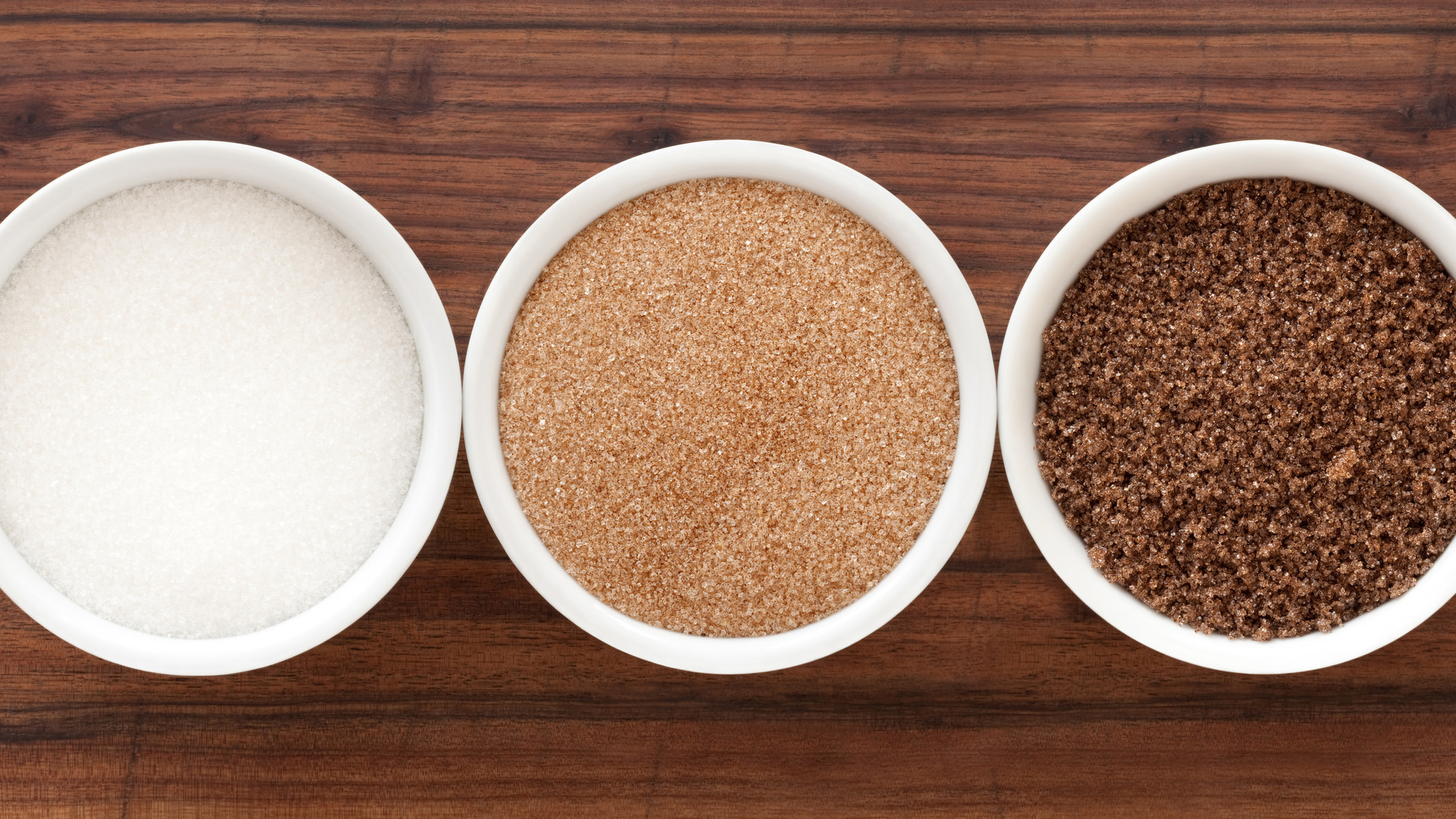What Are The Best Substitutes For Brown Sugar?
How to make light or dark brown sugar when you don't have it on hand.
Even if you're the most prepared of pantry preppers, brown sugar can still find a way to foil all your best-laid baking plans. Maybe you've taken it out of your cabinet to make some ding-dang-diddly delicious cookies, only to discover it's transformed itself into a solid brick that cannot be broken apart, no matter how many times you bash it with a hammer while saying things about its mother. Maybe your recipe calls for light brown sugar, you only have dark, and you're beating yourself up for being unprepared. Or maybe you just flat-out forgot to buy it. It happens to the best of us, even fancy food professionals like myself. Just because you don't have brown sugar does not mean that your plans have been derailed. There are plenty of substitutions for brown sugar that will get you where you need to go, and no one shall be the wiser.
What is brown sugar?
Simply put: brown sugar is just like white sugar, but with molasses. Most of the sugar you'll find in the average American supermarket is extracted from sugarcane—a tall, woody member of the grass family—or from sugar beets, which, true to the name, are an exceptionally sweet variety. On a chemical level the sugar extracted from each of these sources (sucrose) is identical, so once it's processed, the botanical source of the sugar becomes completely irrelevant. This is why, when you check the ingredients on your bag of sugar, it does not mention whether it came from cane or beets. There's absolutely no difference, so it's nothing to be concerned about. One is not better than the other.
To process sugar, the cane/beets are prepared and pulverized, and then the resulting juices are boiled to evaporate excess water and cause the sugar molecules to crystallize. This creates a thick mash, which is then run through a centrifuge, separating crystals (sugar) from syrup (molasses). This process is repeated at least two more times so that the maximum amount of sugar can be extracted from the molasses.
Back in the old days, brown sugar was sugar that hadn't been processed to the point where every microgram of molasses was extracted. In modern times, all sugar gets processed into white sugar; to make brown sugars, white sugar is put into industrial mixers, where it is combined with molasses syrup. For light brown sugar, about 4% of the total volume is molasses; for dark brown sugar, it's approximately 7%. It seems a bit backwards to make brown sugar this way, but for the sake of the supply chain, it works.
Now that you know the truth about brown sugar, you've probably figured out how to make a brown sugar substitute on your own, haven't you? That's because you are a smart, clever, and most likely exceptionally good-looking person. All you need is sugar, molasses, and math.
How to make brown sugar
For light brown sugar: [Amount of sugar called for in your recipe] x 0.04 = Amount of molasses needed
For dark brown sugar: [Amount of sugar called for in your recipe] x 0.07 = Amount of molasses needed
This is relatively easy to process if you're baking by weight, but if you're baking by volume, it might seem tricky. Let's say, for example, your recipe calls for one cup of light brown sugar. One cup equals 16 tablespoons, or 48 teaspoons. So:
48 teaspoons x 0.04 = 1.92 teaspoons (we'll round up to an even 2)
So, to make light brown sugar, fill your measuring cup up halfway with white sugar, then add two teaspoons of molasses, then finish adding the sugar. For dark brown sugar:
48 teaspoons x 0.07 = 3.36 teaspoons (round up to 3 1/2 teaspoons)
If you're baking cookies or mixing the brown sugar into something larger (like a marinade, or a sweet and savory bacon jam), you can just dump the white sugar and molasses in the same mixing bowl and call it a day. If you're using it for a rub (like slow smoked ribs) or for a topping (like in this recipe for cinnamon sugar-coated cake), you'll want to mix the sugar and molasses together well before using.
What if you don’t have molasses?
It's fine to use white sugar in place of brown sugar in a recipe, but again, you need to take into account how you're using it. In baking, brown sugar is slightly acidic, which is why recipes that use it often call for baking soda as a leavener. To account for this discrepancy, add 1/4 teaspoon of cream of tartar or white vinegar to every cup of white sugar you use for baking.
If you're using the sugar in a non-baking application, it's fine to swap without adjusting, though there will be some difference in flavor. You can add a touch of another deeply flavored sweetener, like dark maple syrup or honey, to give the taste a bit more oomph, but it won't the same as brown sugar.
Can you use light brown and dark brown interchangeably?
Yes! The varying levels of acidity from the molasses is negligible, so you can swap one-to-one. Foods made with dark brown sugar will have a slightly more intense flavor and, to state the obvious, will be a little darker.
